Diary of a Journalist
“There’s a charity walk in the Makgadikgadi coming up, fancy it?” enquired my nonchalant Bureau Chief, Kabelo Dipholo, conveniently leaving out the distance involved.
I wasn’t to know it, but this unassuming invitation would send me on a collision course of pain, pleasure and ultimately peace in the Pans.
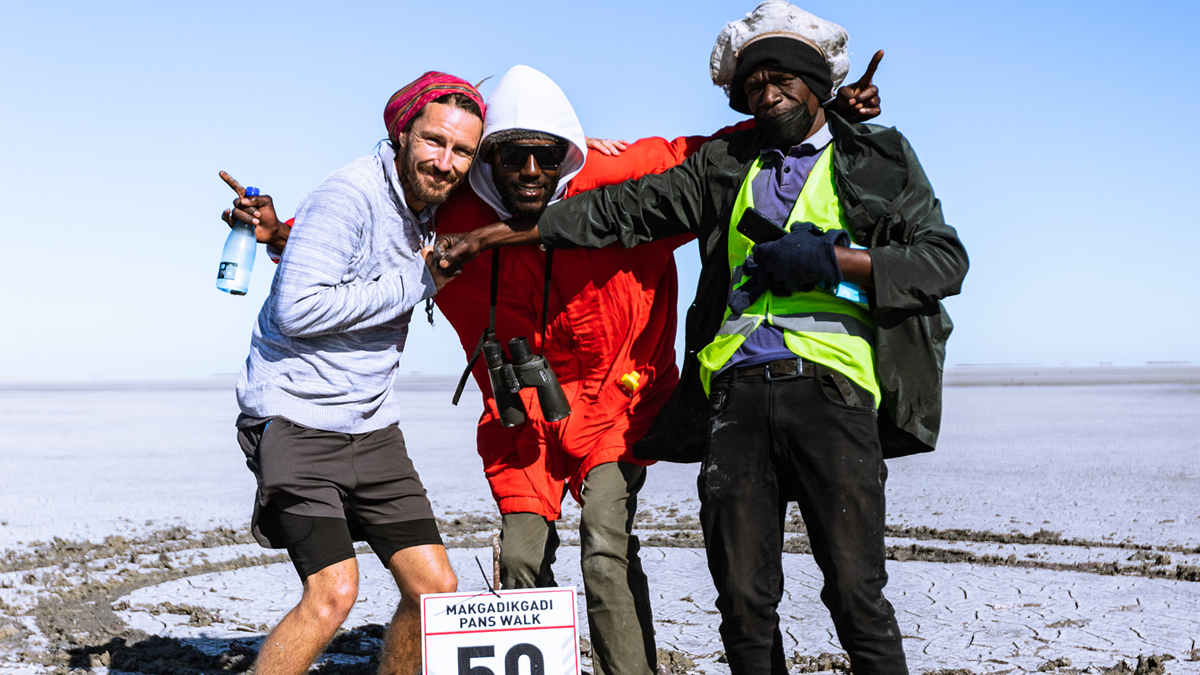
The question was asked on Monday morning. Assuming I’d have a few weeks to panel beat my body into some sort of shape befitting an assault on Makgadikgadi, I hesitantly agreed, swayed by the idea of escaping the dreaded ‘comfort zone’ and all for a good cause.
It was not till later that afternoon, as I hammered happily away on my keyboard, that Dipholo dropped his bombshell.
“By the way, the walk’s this Friday and it’s 102km!”
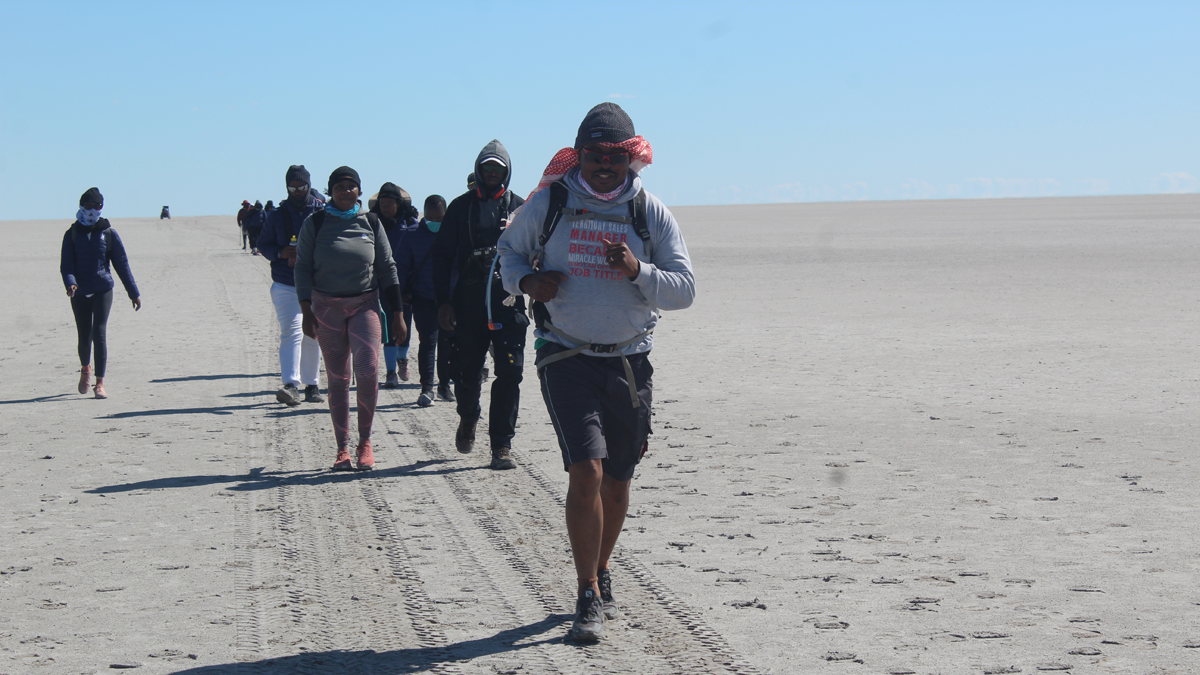
Oh dear!
And so it was that four days later, along with Mmegi’s equally nervous Lesedi Mkhutshwa, while the rest of Francistown geared up for the long weekend, we left the bus rank at daybreak for our daunting date with destiny.
Although our final destination was Mosu village, we headed south first, our cramped, creaking combi spluttering its way down the A1 towards Palapye where we were to catch a ride with the event organiser’s, Y Care and this year’s main sponsors, First National Bank Botswana (FNBB).
Founded by Dr Nomsa Mbere, Y Care have been traversing the Makgadikgadi for charity annually since 2003; Covid-19 had put paid to the last two editions and the team’s hunger to get back on the Pans was obvious.
FNB’s contingent, the majority members of the bank’s walking club, seemed surprisingly relaxed about the challenge ahead, many indulging in an alcoholic beverage or three while tucking into their Nandos – hardly the pre-match meal of champions I told myself as I munched on my banana, smugly washing it down with water.
It made for a laidback vibe and the bus journey passed in a pleasant haze, the only hiccup coming when the driver ignored calls to stop at Lethlakane Liqourama to replenish dwindling stocks.
On arrival at Mosu, the village made famous by former President Ian Khama’s decision to lay down roots here, we were dropped off at the Kgotla, stretching our legs for the 2.5km walk to the campsite set up on the fringe of Sua Pan (there are five pans in total, together they make up the mighty Makgadikgadi).
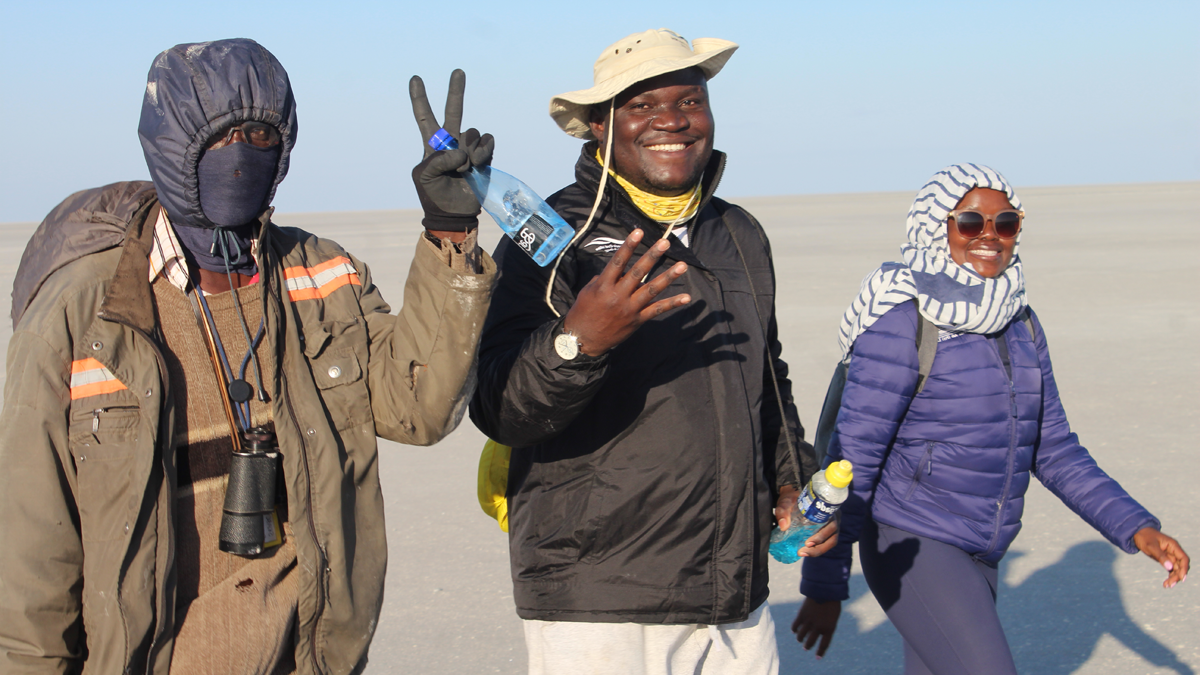
After pitching my tent, with the help of both Mkhutshwa and one of Y Care’s excellent volunteers, wolfing down a tasty supper (no help was needed for that!) and meeting the rest of the walkers – a small, enthusiastic group from Botash and Morupule Mines – I retired to bed at around 9pm, seeking a good night’s sleep. Most were still huddled by the fire at this point, the booze flowing freely.
‘They’ll never make tomorrow’s 5am start!’ I yawned, glad of my sleeping bag as the howling wind raged angrily outside.
But make it they did, every one.
Energised by a hearty breakfast and strong coffee, with darkness still dominant, the faintest hint of gold evident in the east, the adventure begins.
Our motley crew includes 60 walkers, 45 of them paying clients, the rest a mixture of rangers, journalists and Y-Care members.
The walk was spread over three days: twin 44km treks to and from Kubu Island either side of a 14km ‘rest day’.
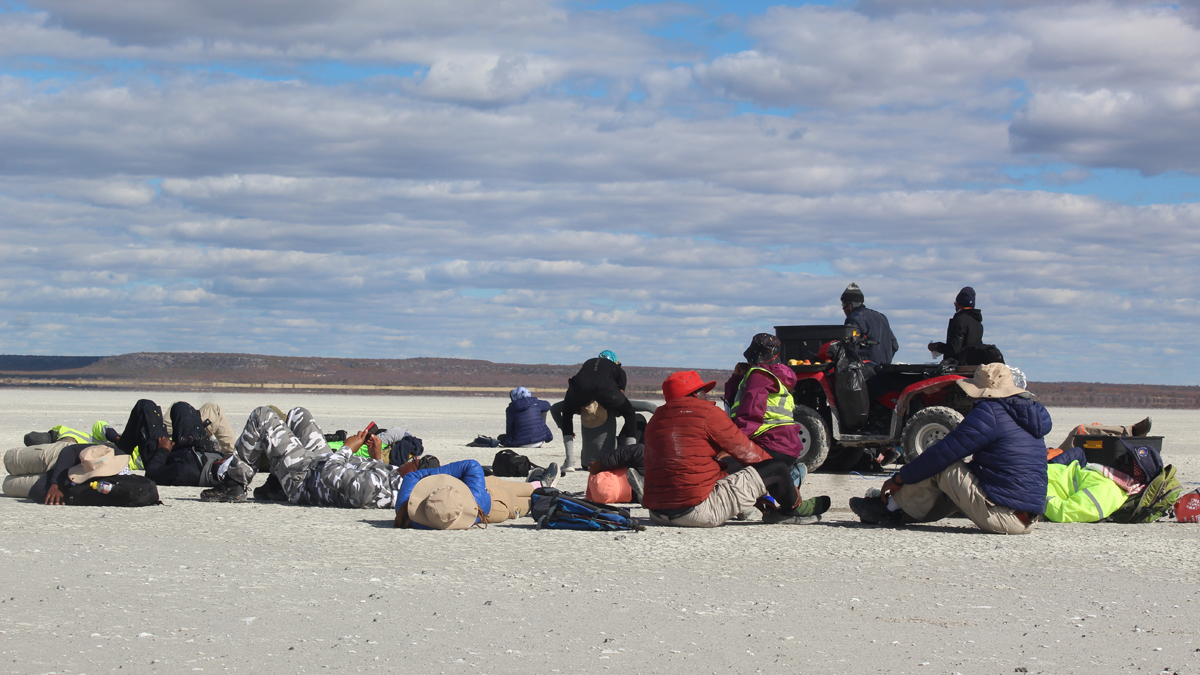
With not a hangover in sight, the walkers adopt a robotic rhythm, falling into different-paced groups, snaking our way into the pans, piercing its gloomy silence with our good-natured chatter.
Although not religious, I can’t help thinking we resemble the Israelites walking out of Egypt many moons ago.
We will be walking all day so it is important not to set off too fast; Y Care trustee, Nelson Letshwere advices we keep a pace of at least 6km-an-hour.
Some quick Maths and I work out this means just over seven hours on the move.
I assume a place near the back of the pack, wondering if my body will survive the duration.
Like a shy maiden, the pan slowly sheds its cloak of darkness as the rays of the rising sun stretch out to reveal the harsh landscape.
The Makgadikgadi Pans has a beauty that is hard to explain; after some debate, our group decide its appeal comes from its uniqueness.
Covering 16, 000 km², it is the biggest salt pan in the world.
Apart from a few rocky islands scattered haphazardly across the whitish/grey plains, where baobabs and shrub thrive, nothing grows here; the salt kills it all.
It makes for a vast, open expanse of land that continues 360° as far as the eye can see.
Mirages on the horizon promise water that never comes.
“Not at this time of year. But in the rainy season, all this will be covered in ‘metsi’,” explains Pan Ranger, Busane ‘Booster’ Ipeleng, pointing out several flamingo eggs swept far from their nest by last year’s flood.
Waving his hand towards a speck in the distance, the Mosu man assures me that when the rains come, he can take me to islands inhabited by thousands of nesting flamingos.
Tracks from long gone animals are also spotted, including elephant, hyena, lion and even buffalo.
“These marks can remain for over two years,” reveals the knowledgeable Booster.
Lingering muddy patches along our route add to the walk’s difficulty; there is much slipping and sliding as we gradually eat up the miles, resting briefly at intervals and pushing for lunch at the 30km mark.
With no shade and no cloud cover, the relentless sun soon has this tiring Englishman turning a dangerous shade of pink – ‘a bit like last night’s sunset’ quips Mkhutshwa cheerfully.
Although delicious, my cheese and tomato sandwich fails to provide the boost I need and the last 10km are covered in agony – they are covered, though, and I hobble into camp to be met by a 44km sign that fittingly proclaims: ‘Done for the Day’.
I’m one of the last to arrive, the early pace setters already sat around a roaring fire, soaking their blistered feet in warm salt water, their aching muscles being massaged back to life.
The heat of the day has been replaced by the cool of night.
Buckets full of steaming water are provided, and those brave enough to bare their bodies escape behind bushes and rocks to wash the day’s exertions away.
Naked in the middle of nowhere, the stars twinkling cheekily above – the nearest of which is four light years away – it is quite a liberating sensation!
After swapping war stories around the fire, I drag my cramping legs to bed, fearing I may not be fit enough to attempt tomorrow’s exertions – a 14km round trip to ‘Kubu Island Nnye’ aka little Kubu.
Sleep, though punctured with several trips to the ‘toilet’, restores some mobility to my creaking limbs and I manage the walk relatively easily, albeit at an extremely gentle pace.
The remainder of the day is spent resting, chatting and exploring the astonishing Kubu Island. Home to numerous baobabs and rocky outcrops, the ancient site gives out a sense of serenity and peace that is hard to find anywhere else.
For those who love camping and the great outdoors, a weekend here, which can be arranged through the Gaing O Community Trust, is a must.
The return journey to Mosu the following morning sees our number whittled down to around 30, those who are in no shape to continue getting lifts back with the support team.
Although I am tempted to join them, I stubbornly (some might say heroically!) decide to put my body through another day of torture, inspired, perhaps, by the stunning sunrise.
Trudging through the Pans, the terrain changing from a blinding, salt-encrusted white to darker shades and then back again, gentle conversations between long bouts of silence are the pattern of the day.
Each lost in their own thoughts, I find my mind drifting to the late Dubani-wa-Dubani. One of his last assignments for The Voice before his death in 2018 was to walk the Makgadikgadi under moonlight.
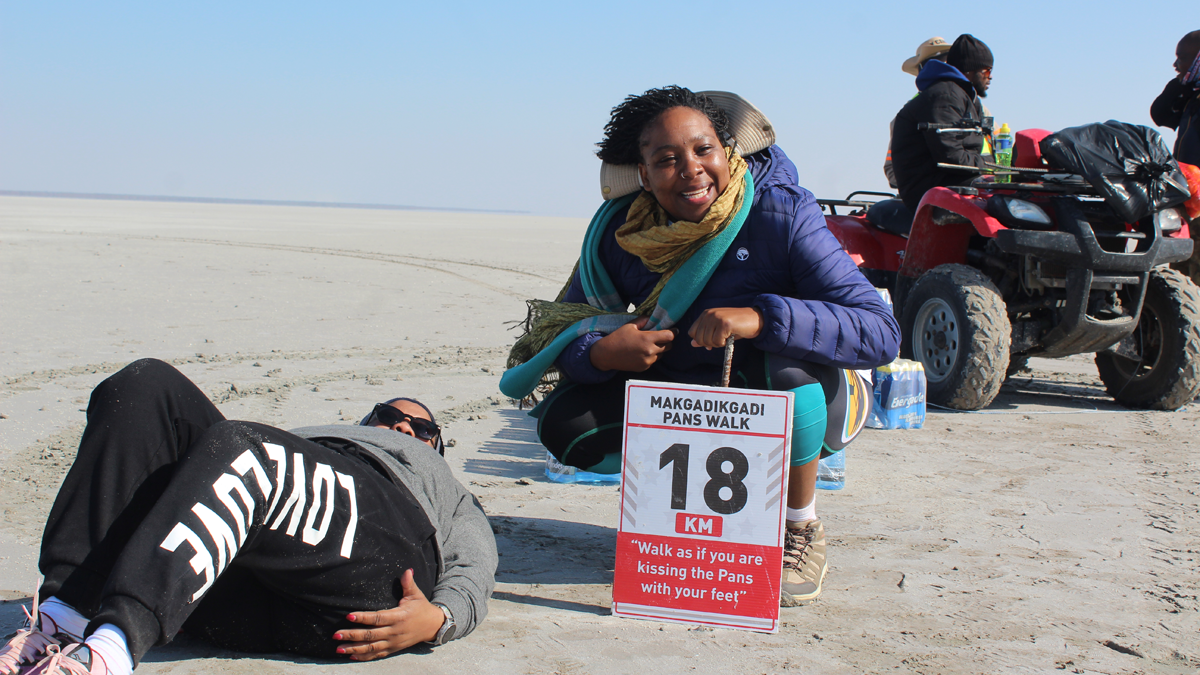
With barely any prior warning and no training, ‘Dubs’ prevailed and this spurs me on, as do memories of times we shared together.
It seems the spirits of the dead were strong in the Pans that day as my wonderings then turn to my late father, Donald Moore.
My dad loved walking.
I can’t help thinking though, that at 71, this might have been a challenge too far even for him.
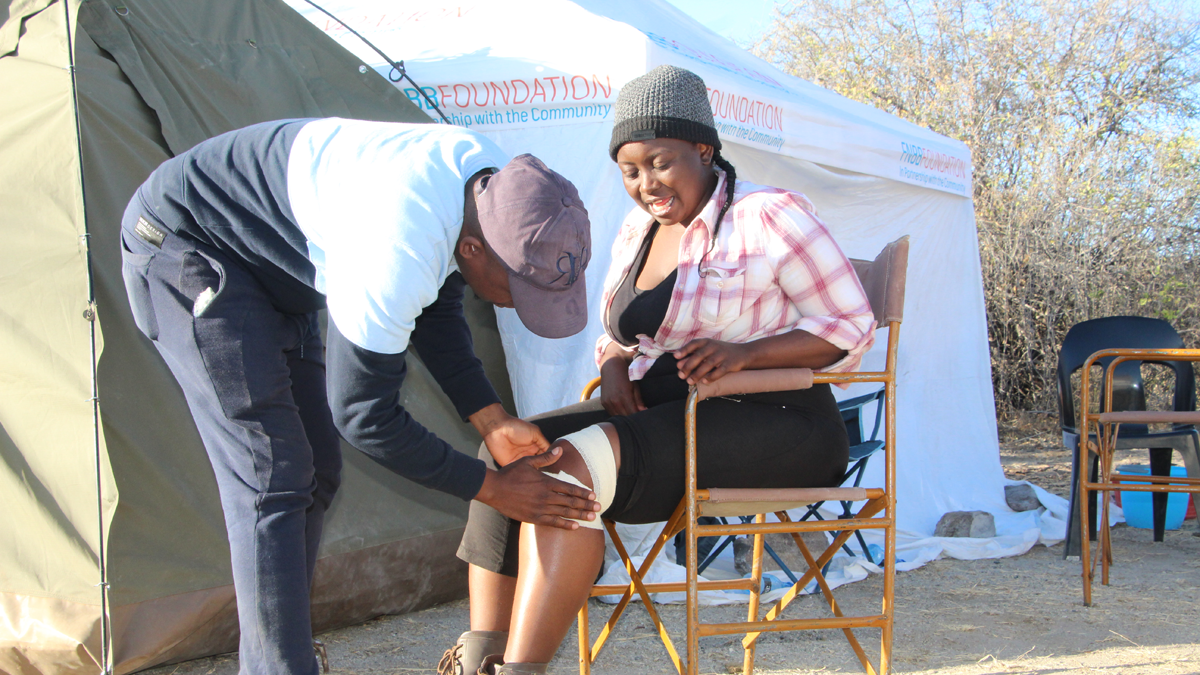
Then again, he was nothing if not stubborn.
Certainly, he would have told me I should have wrapped this diary up long ago!
We arrive at Mosu exhausted but exhilarated, our arrival coinciding with sunset, the cloudy sky dancing with colour (unfortunately, unlike my body, my battery has given in and I am unable to capture the moment on camera).
I might get a second chance in August, however, as the Y Care team return for the Midnight Walk next month (12 – 15).
The donations from both walks will be combined, with the proceeds divided amongst suitable registered charities.







